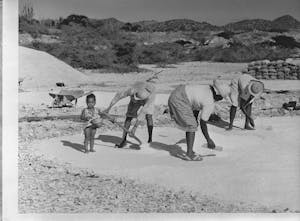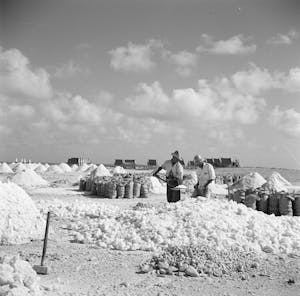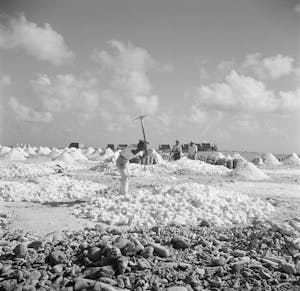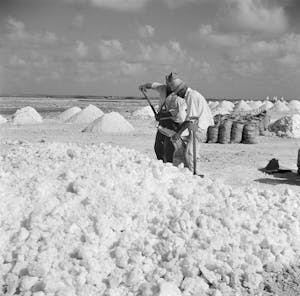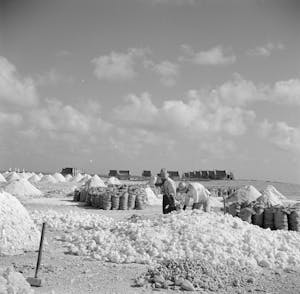Salt production on Bonaire
The naturally formed salt ponds have been used for nearly 400 years.
For thousands of years people have been using salt for food preservation. In Roman times, salt was in such high demand that soldier wages would sometimes be paid out in salt (origin of the word 'salary').
In the 15th century, the Dutch were producing salt by burning peat, as the ashes contained residual salt. Because this method caused soil subsidence, thus increasing the risk of floods, the production of salt by burning peat was outlawed in 1515. For a while after this, Holland heavily relied on salt imports from Spain and Portugal until Holland went to war with Spain. While the demand for salt was at an all time high (because they needed the salt for the preservation of herring) the WIC (West Indische compagnie) was tasked with finding salt in the Americas.
The 'West Indische Compagnie'
The WIC discovered that Bonaire had natural occurring salt ponds, which would be ideal for producing salt. Starting in 1636, the WIC started producing salt on a large scale. Over the next 200+ years, Bonaire would produce over 50 million kilos of salt, which would be shipped to Holland. To handle all the incoming cargo ships, the WIC create 4 pickup points, each with it's own colored obelisks (red, white, blue and orange), which still stand today. On land they would hoist a flag in one of these colors, so ships would know where to pick up the salt.
Because the production of salt is very labor intensive, the WIC depended on slaves to do the hard work. They would work in harsh conditions and sleep in tiny slave huts near the salt ponds. When slavery was abolished in 1863, labor costs caused the production costs to go up and the salt production on Bonaire ceased to be profitable.
Modernization
Ownership of the salt ponds changed hands a couple of times after, but the production remained low until it was sold to a U.S. company in 1966. The American company modernized the system of ponds and replaced manual labor with bulldozers and other heavy equipment. Today, the salt ponds (now owned by Cargill) produces over 400 million kilos of salt every year, which is about 4 billion salt grinders!
